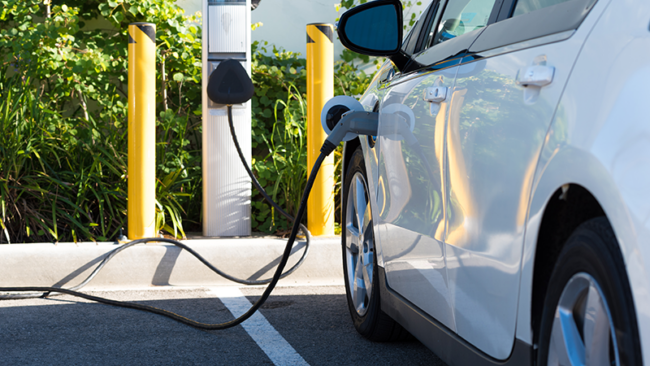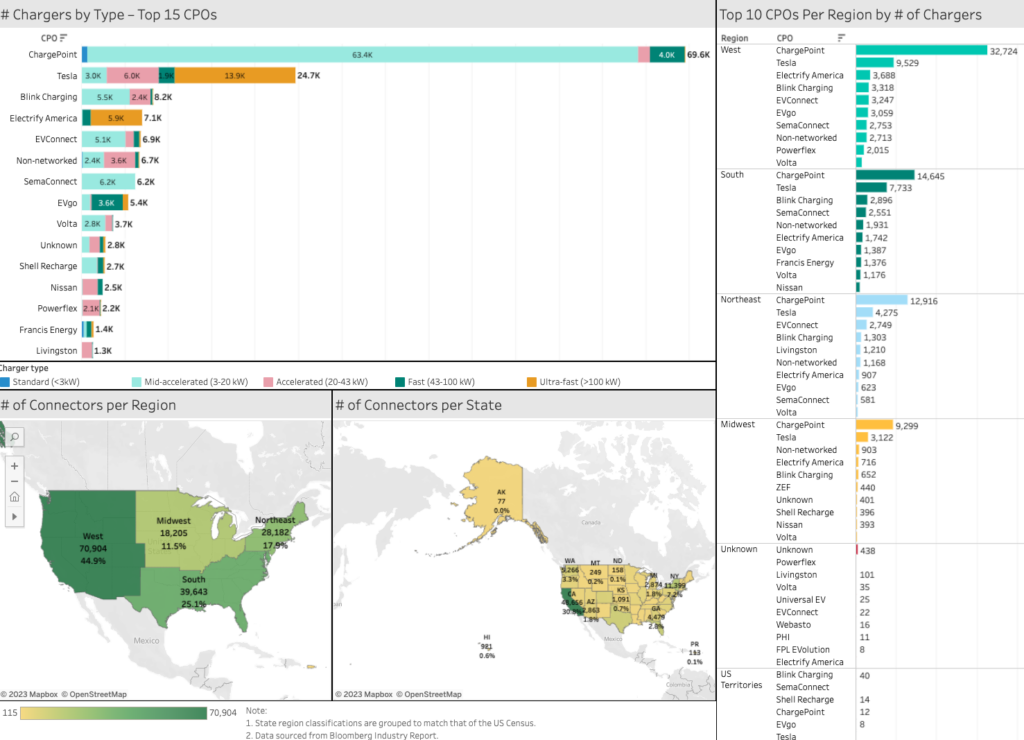Stay connected
Subscribe to our fleet blog and follow us on social media to receive all our fuel and energy industry insights.

According to experts, electric vehicles (EVs) will make up at least a third – or even half – of all light vehicles sold yearly in the United States by 2030. This is up considerably from what was about 7% of all sales in 2022. For companies who have a fleet of vehicles, these projections are significant in order to stay competitive as others are adopting and experiencing the benefits. It’s time to strategize and adopt an EV integration plan. As you start to fold EVs into your fleet, those with EV fleet experience advise gradual adoption: start with a mixed-energy fleet of both EV and internal combustion engine (ICE) vehicles to ensure the smoothest and most economically viable transition. In this article, we’ll talk about why a mixed fleet is a good place to start, and what to look for in a fleet card provider when creating a strategy for your EV adoption plan.
Building a mixed fleet – an integration of both electric and traditional vehicles – provides a pragmatic approach for businesses navigating through the initial stages of fleet electrification. With a mixed fleet your business can strike that delicate balance between innovation, operational reliability, and efficiency. While EVs offer undeniable advantages, the infrastructure – namely charging stations and a grid to support them – is not yet developed enough to sustain a full population of EV users. A mixed fleet provides a safety net, ensuring uninterrupted service coverage even in areas where electric infrastructure is sparse. This mixed fleet adoption strategy allows businesses to gradually familiarize themselves with the nuances of electric vehicle operation, maintenance, and management without undertaking an all-encompassing shift. It also affords the flexibility to capitalize on the strengths of different vehicle types based on specific operational needs and route characteristics, ensuring that the fleet’s efficiency isn’t compromised during the transition period. Adopting a mixed fleet is a risk-mitigated, calculated introduction to electric mobility, offering businesses the latitude to adapt, learn, and eventually transition fully when the infrastructure is fully in place.
Electric vehicles (EVs) offer substantial cost savings in comparison to their internal combustion engine (ICE) counterparts, primarily through lower operating and maintenance expenses. Electricity as a fuel source is generally cheaper than gasoline, and the efficiency of electric drivetrains reduces the cost per mile driven. Additionally, EVs have fewer moving parts than traditional vehicles, which results in less wear and tear and subsequently, lower maintenance costs. The absence of oil changes, exhaust system repairs, and transmission services further contribute to their economical operation. Governments around the world also offer various incentives, tax credits, and rebates to promote the adoption of electric vehicles, reducing the initial purchase price and making them more financially accessible to consumers. Over the lifespan of an electric vehicle, these cost savings can offset the typically higher upfront cost, resulting in a more economical and environmentally friendly transportation option for your fleet.
Some fleet card companies, like WEX, offer payment products for mixed fleets. Your strongest choice is to partner with a company with consolidated solutions specifically built for mixed fleets allowing your fleet and operations managers to best manage billing, payments, discounts, and reporting as they incorporate EVs into their fleets. Connecting your WEX account to our RFID or DriverDash app offering mobile payment, provides one invoice and one set of reports using one credit line for all of your vehicles.
Fleet managers are often in need of a unified solution for fueling their vehicles and tracking the accompanying data. Customers with mixed fleets of both ICE vehicles and EVs are now required to navigate a system of multiple apps, credit lines, invoices, and interfaces. With the DriverDash mobile app, WEX customers access an interface that integrates both EV and ICE fueling data and reporting. With DriverDash, WEX customers have access to both quality EV chargers and select fueling locations across the U.S., along with fraud controls, and Level III transaction data for any type of vehicle – both ICE and EV – all in one interface. WEX customers with mixed fleets can activate the EV portion of the app, enabling commercial fleet drivers to locate WEX’s in-network EV charging locations and process payments for those charging sessions. Payment via DriverDash leverages WEX’s proprietary closed-loop payments network, increasing the security of each transaction while transmitting charging behavior, driver identification information, vehicle mileage, and other details to the fleet manager.
Charging networks for EVs provide a rapidly growing infrastructure that allows EV drivers to recharge their vehicles in public locations. These networks operate by positioning charging stations at accessible and strategic locations, including urban areas, shopping centers, and along major highways. Users can locate a nearby charging station through mobile apps where they can see real-time availability and sometimes even reserve a charging slot. Charging stations within these networks typically offer various charging speeds, ranging from slow Level 1 charging, suitable for overnight use, to ultra-fast Level 3 charging, which can replenish most of an EV’s range in under an hour.
Payment is often handled digitally, either through membership cards, credit cards, or mobile apps associated with the respective charging network, providing a streamlined and convenient experience for the users. Some networks also have roaming agreements with others. These agreements allow members to use different networks (different brands of charger) seamlessly, expanding the accessible charging infrastructure for EV drivers. These networks play a crucial role in promoting the adoption and use of electric vehicles by alleviating range anxiety and facilitating long-distance travel.
WEX has expanded its EV charging network in the United States. An estimated 85% of chargers across America’s roads will now be discoverable through DriverDash where users receive WEX’s full complement of industry-leading reporting capabilities.

The above data visualization provided by WEX senior data analyst Jake Jaworski illustrates how accessible ChargePoint chargers – a WEX partner – are in the contiguous U.S.
Learn more and get your fleet operations ready for a mixed fleet that makes the most sense for your business.
WEX is a leading, global fintech solutions provider, simplifying payments and back-end business processes in the fleet management, benefits management, and corporate payments areas. To learn more, please visit the company’s About WEX page.
Resources:
Wall Street Journal
Subscribe to our fleet blog and follow us on social media to receive all our fuel and energy industry insights.